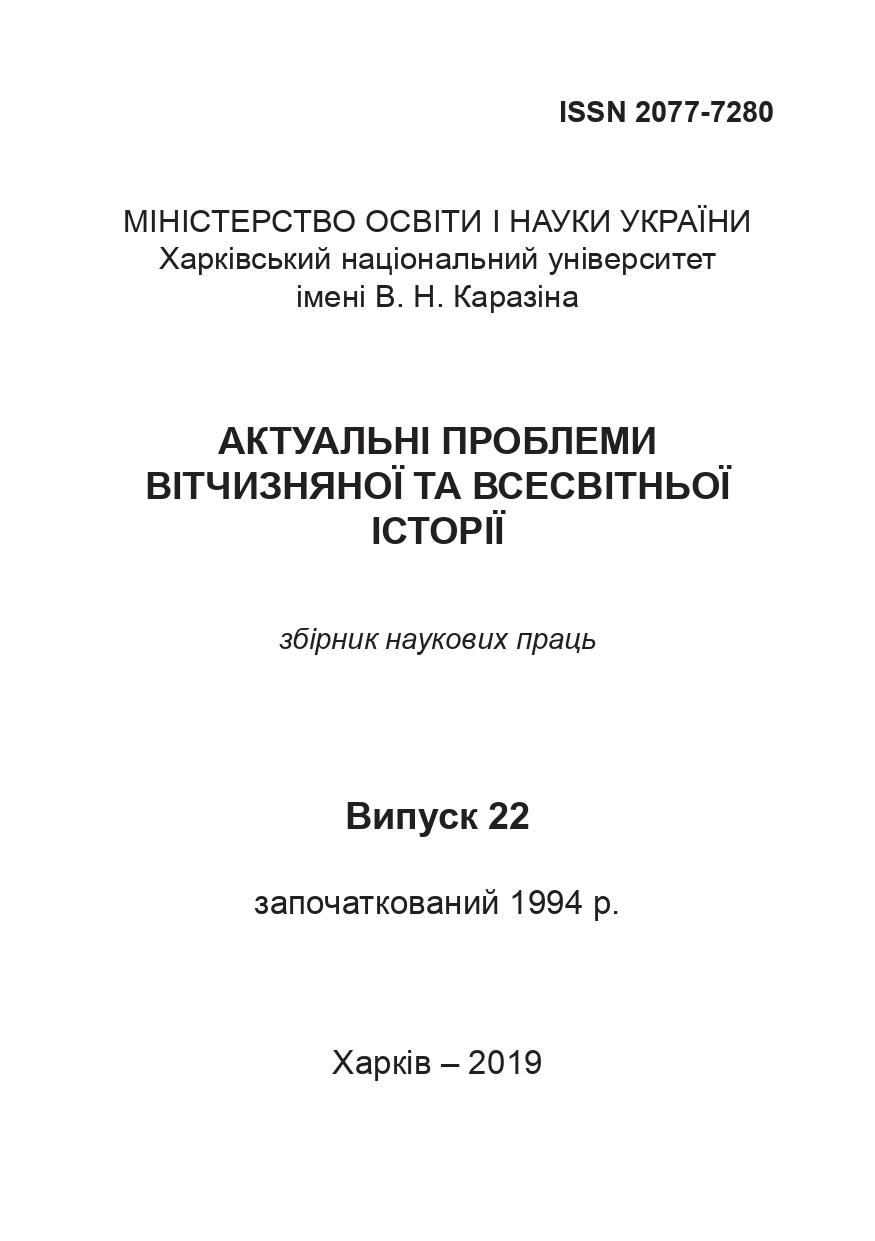Проблема «зникнення» набатейських племен у VII–V ст. до н. е.
Анотація
Стаття присвячена ранньому періоду історії набатейского суспільства, зокрема, розгляду питання про причини відсутності згадок про набатеїв в письмових джерелах в період VІІ–V ст. до н. е., з огляду на специфіку способу життя кочових суспільств. Автор дійшов висновку, що в VII ст. до н. е. у набатеїв існувала «кочова» держава з царем на чолі, що не вимагало обов’язкової наявності осілого способу життя. Необхідність у функціонуванні державних структур, що зародилися ще в глибоку давнину під впливом зовнішньої загрози, зникла в період VI–V ст. до н. е., та з’явилася знову в період еллінізму. Внаслідок цього і стався такий швидкий стрибок розвитку й остаточне становлення Набатейского держави у II ст. до н. е.
Завантаження
Посилання
Ackroyd P. R. Meaning and Exegesis // Words and Meaning: Essays Pressented to David Winton Thomas. Cambridge, 1968. P. 1–14.
Bacon E. Obok. A Study of Social Structure of Eurasia. New York, 1958.
Barfield T. The Perilous Frontier: Nomadic Empires and China, 221 ВС to AD 1757. Cambridge, 1992.
Barr J. Comparative Philology and the Text of the Old Testament. Oxford, 1968.
Broome E. C. Nabaiati, Nebaioth and the Nabataeans: the Linguistic Problem // Journal of Semitic Studies. 1973. Vol. 18. P. 1–16.
The Early state / Ed. H. J. M. Claessen, P. Skalník. The Hague, 1978.
Origins of the state: the anthropology of political evolution / Eds. R. Cohen, E. Service. Philadelphia, 1978.
Collinge N. E. Names and Resistance to Sound Shifts // Proceedings of the Eighth Intenational Congress of Onomastic Sciences. The Hague. 1966. P. 94–95.
Eph’al L. The Ancient Arabs: Nomads on the Borders of the Fertile Crescent, 9th– 5th Centuries B. C. Jerusalem, 1982.
Fletcher J. The Mongols: ecological and social perspectives // Harvard Journal of Asiatic Studies. 1986. Vol. 46. P. 11–50.
Fried M. The Evolution of Political Society: an essay in political anhtripology. New York, 1967.
Gailey C., Patterson T. Power Relations and State Formation. Washington. 1988.
Geers F. The Treatment of Emphatics in Akkadian // Journal of Near Eastern Studies. 1945. Vol. 4. P. 65–67.
Gleason H. A. An Introduction to Descriptive Linguistics. New York, 1955.
Graf D. F. The Origin of the Nabataeans // Aram. 1990. № 2. P. 45–75.
Hackl U., Jenni H., Schneider C. Quellen zur Geschichte der Nabatäer: Textsammlung mit Übersetung und Kommentar. Freiburg, 2003.
Irons W. Political Stratification Among Pastoral Nomads // Pastoral Production . Society, 1979. P. 361–374.
Khazanov A. M. Nomads and the Outside World. Cambridge, 1984.
Knauf E. A. Die Herkunft der Nabatäer // Petra. Neue Ausgrabungen und Entdeckungen. München, 1986. S. 74–86.
Knauf E. A. Edom und Arabien // Biblische Notizen. 1988. № 45. S. 62–79.
Lattimore O. Inner Asian Frontiers of China. London–New-York, 1940.
Macdonald M. C. A. Reflections on the linguistic map of the pre-Islamic Arabia // AAE. 2000. P. 28–79.
Na’aman N. Province System and Settlement Pattern in Southern Syria and Palestine in the Neo-Assyrian Period // Neo-Assyrian Geography / Ed. by M. Liverani. Roma, 1995. P. 103–115.
Reiner E. A. Linguistic Analysis of Akkadian. Hague, 1966.23
Robins R. H. General Linguistics. Bloomington, 1965.
Schneidewind W. M. The Rise of the Aramean States // Mesopotamia and the Bible. Comparative Explorations / Ed. by M W. Chavalas, K. L. Younger, Jr. Michigan, 2002. P. 276–287.
Service E. Origins of the State and Civilization. New-York, 1975.
Starky J. Petra et la Nabaténe // Supplement au Dictionaire de la Bible. 1966. T. 7. Cols. 886–1017.
Wenning R. The Nabataeans in History // The World of the Nabataeans: the International Conference «The World of the Herods and the Nabataeans» (17–19 April 2001). Stuttgart, 2007. P. 25–44.
Крадин Н. Н. Кочевники, мир-империи и социальная эволюция // Альтернативные пути к цивилизации. М., 2000. C. 490–511.
Крадин Н. Н. Кочевые общества. Владивосток, 1992.
Марков Г. Е. Кочевники Азии. Структура хозяйства и общественной организации. М., 1976.

